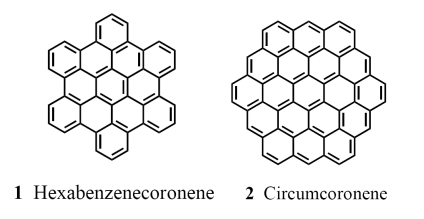Chapter 1. Impact 12.1
Impact…ON ASTROPHYSICS: I12.1 Rotational and vibrational spectroscopy of interstellar species
Observations by the Cosmic Background Explorer (COBE) satellite support the long-held hypothesis that the distribution of energy in the current Universe can be modelled by a Planck distribution (eqn 7A.6 of Topic 7A) with T = 2.726 ± 0.001 K, the bulk of the radiation spanning the microwave region of the spectrum. This cosmic microwave background radiation is the residue of energy released during the Big Bang, the event that brought the Universe into existence. Very small fluctuations in the background temperature are believed to account for the large-scale structure of the Universe.
The interstellar space in our galaxy is a little warmer than the cosmic background and consists largely of dust grains and gas clouds. The dust grains are carbon-based compounds and silicates of aluminium, magnesium, and iron, in which are embedded trace amounts of methane, water, and ammonia. Interstellar clouds are significant because it is from them that new stars, and consequently new planets, are formed. The hottest clouds are plasmas with temperatures of up to 106 K and densities of only about 3 × 103 particles m–3. Colder clouds range from 0.1 to 1000 solar masses (1 solar mass = 2 × 1030 kg), have a density of about 5 × 105 particles m–3, consist largely of hydrogen atoms, and have a temperature of about 80 K. There are also colder and denser clouds, some with masses greater than 500 000 solar masses, densities greater than 109 particles m–3, and temperatures that can be lower than 10 K. They are also called molecular clouds, because they are composed primarily of H2 and CO gas in a ratio of about 105 to 1. There are also trace amounts of larger molecules. To place the densities in context, the density of liquid water at 298 K and 1 bar is about 3 × 1028 particles m–3.
It follows from the Boltzmann distribution (Foundations B and Topic 15A) and the low temperature of a molecular cloud that the vast majority of a cloud’s molecules are in their vibrational and electronic ground states. However, rotational excited states are populated at 10–100 K and decay by the emission of radiation. As a result, the spectrum of the cloud in the radiofrequency and microwave regions consists of sharp lines corresponding to rotational transitions (Fig. I12.1). The emitted radiation is collected by Earth-bound or space-borne radiotelescopes, telescopes with antennas and detectors optimized for the collection and analysis of radiation in this range. Earth-bound radiotelescopes are often located at the tops of high mountains, as atmospheric water vapour can reabsorb microwave radiation from space and hence interfere with the measurement.

Figure I12.1 The rotational spectrum of the Orion nebula, showing spectral fingerprints of diatomic and polyatomic molecules present in the interstellar cloud. (Adapted from G.A. Blake, et al., Astrophys. J. 315, 621 (1987).).
Over 100 interstellar molecules have been identified by their rotational spectra, often by comparing radiotelescope data with spectra obtained in the laboratory or computed. The experiments have revealed the presence of trace amounts (with abundances of less than 10–8 relative to hydrogen) of neutral molecules, ions, and radicals. Examples of neutral molecules include hydrides, oxides (including water), sulfides, halogenated compounds, nitriles, hydrocarbons, aldehydes, alcohols, ethers, ketones, and amides. To date, the largest molecule detected by rotational spectroscopy is the nitrile HC11N.
Interstellar space can also be investigated with vibrational spectroscopy by using a combination of telescopes and infrared detectors. The experiments are conducted primarily in space-borne telescopes because the Earth’s atmosphere absorbs a great deal of infrared radiation (see Impact I12.2). In most cases, absorption by an interstellar species is detected against the background of infrared radiation emitted by a nearby star. The data can detect the presence of gas and solid water, CO, and CO2 in molecular clouds. In certain cases, infrared emission can be detected, but these events are rare because interstellar space is too cold and does not provide enough energy to promote a significant number of molecules to vibrationally excited states. However, infrared emissions can be observed if molecules are occasionally excited by high-energy photons emitted by hot stars in the vicinity of the cloud. For example, the polycyclic aromatic hydrocarbons hexabenzocoronene (C48H24, 1) and circumcoronene (C54H18, 2) have been identified from their characteristic infrared emissions.
